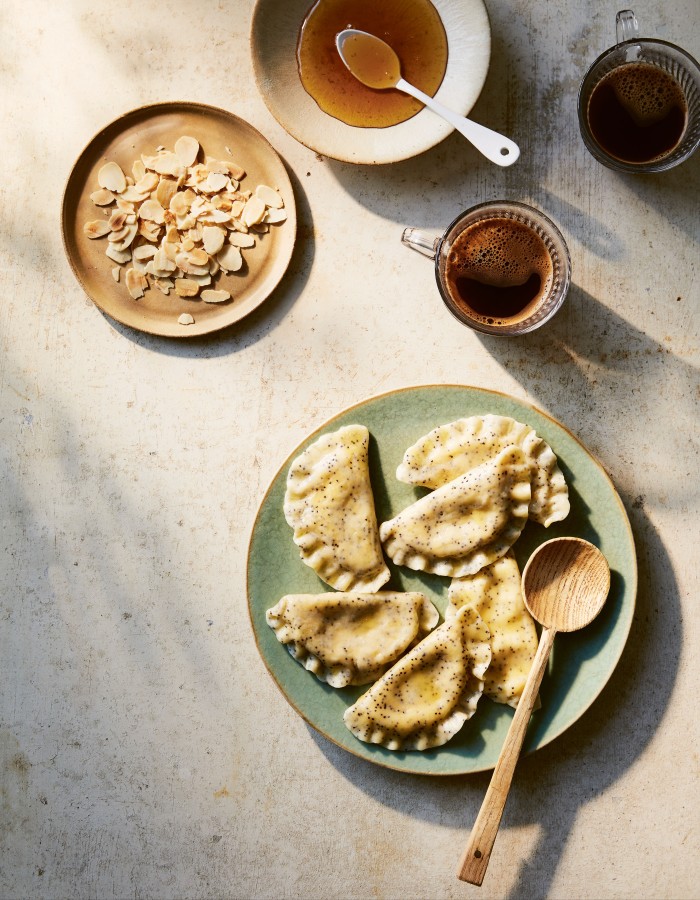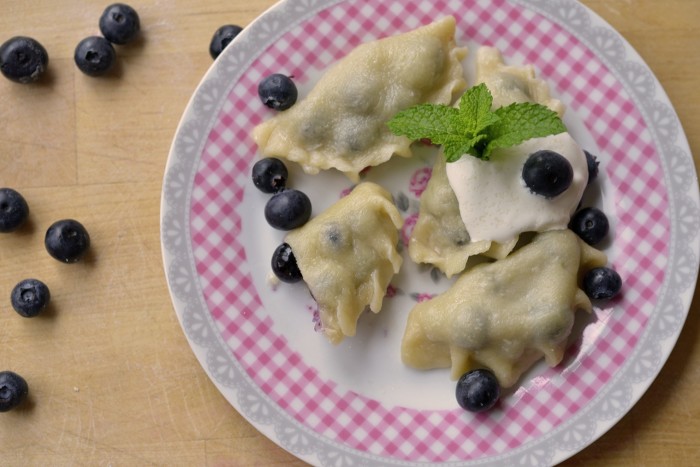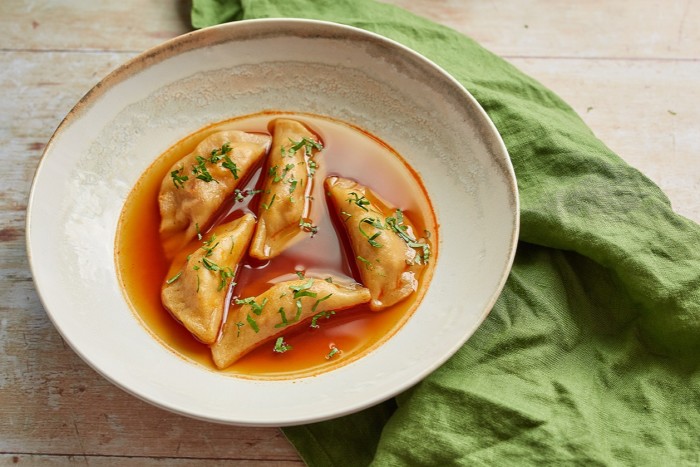A paean to pierogi

Roula Khalaf, Editor of the FT, selects her favourite stories in this weekly newsletter.
Soft on the inside, crispy at the edges and loaded with flavour, pierogi have long vied for the title of Poland’s national dish. Not to be confused with the Russian pirozhki, pierogi should almost always be spoken of in the plural because a single pieróg is simply never enough. Before cooking they look like miniature Cornish pasties, neatly folded over with a fluted edge and doughy in texture. Packed full of different mixes of flavours, when pulled apart the sticky dumplings release an uplighting puff of steam. They resemble a dim sum and ravioli hybrid, with a bite that ultimately melts in the mouth.


In Poland, pierogi have witnessed empires, invasions and have gained their own patron saint. Although their origins are unclear, we do know that a version filled with veal kidneys appeared in Poland’s first cookbook, published in 1682. The dish has been a staple across the country ever since, with hundreds of creative sweet and savoury adaptations. Outside the motherland, pierogi remain a symbol of Polish pride and comfort eating. In 1993 a small village in Alberta, Canada, unveiled a 27ft pierogi statue in their honour, while in the US there are pierogi vendors, restaurants, and festivals in abundance: 8 October marks the country’s national pierogi day.

“Pierogi are a symbol of Polishness in and outside of the country,” says Zuza Zak, a cookery writer, food blogger, TV producer and the author of a new cookbook that shares more than 50 recipes. “My aim is to preserve old traditions but also bring things up to date and to make Polish dumplings accessible and enjoyable for all generations,” she adds. From honey-drop brunch dumplings studded with raisins to smoked fish and dill “zeppelins”, the book is split into traditional and modern pierogi making. She covers regional versions, ancient recipes, traditions and the stories that lie behind them, alongside contemporary iterations that are vegan, gluten-free and seasonal – such as spiced pierogi filled with pumpkin, twaróg curd cheese and honey or poppyseed pierogi loaded with a sweet, almond-flavoured filling.


For Anna Hurning, author of Polish Your Kitchen, the best thing about pierogi is “the variety”, she says. “There are some traditional fillings that we all know and love: potato and cheese, sauerkraut and mushroom; but you can also be as creative as you want with it.” Hurning shares her recipe for pierogi z jagodami, a popular summer dumpling filled with blueberries and served with sour cream sprinkled with sugar.
In London, Mamuśka serves fast-casual pierogi topped with crispy onion and bacon that are best eaten as an entrée to schabowy (breaded pork loin served with cheese or mushroom sauce). But for Great British Chefs contributor Kuba Winkowski, whose refined classic cookery is peppered with Polish influences, the pierogi deserves elevation. Fusing eastern Europe and Spain, Winkowski makes his stuffed with prawns, chorizo and basil, served with a paprika-strained chorizo and cider broth. In New York, East Village mainstay Veselka has been dishing up 24/7 pierogi since 1954, selling more than 5,000 traditionally filled dumplings a day, alongside 100 gallons of bubbling borscht. Brooklyn’s relatively new outlet Pierozek brings some 16 variations of Michelin Guide-approved pierogi to a historically Polish neighbourhood – including spicy jalapeño and honey barbecue shredded chicken fillings.
To most Polish natives, however, the dish is still best made and consumed at home. “Pierogi might taste really good in a restaurant but there is something slightly taken away from it because you haven’t gone through the process of making it yourself,” says Zak. “The whole experience of pierogi is made to be shared.”
Pierogi: Over 50 Recipes to Create Perfect Polish Dumplings by Zuza Zak is published by Quadrille on 18 August at £18. Join Zuza Zak and Alissa Timoshkina on 11 September for an online pierogi workshop to raise money for @cookforukraine. Visit alissatimoshkina.com for more information
Comments